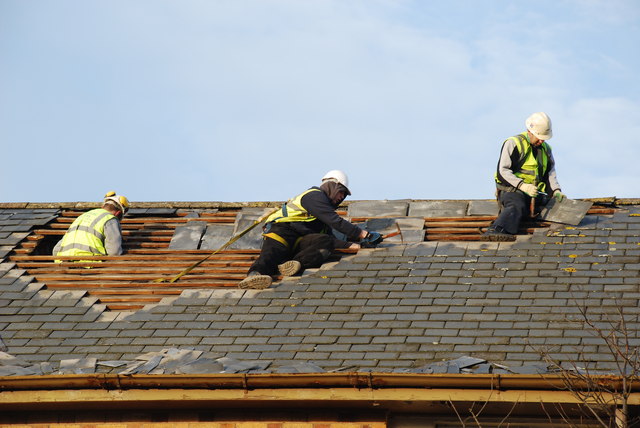For the first couple of years after installing your new roof, you expect it to be in the best of shape. As time goes by and years turn into decades, the forces of wear and tear come in. You may begin to notice discoloration, leaks, rot, or moss growth. All these are signs that it’s time to either get a new roof or schedule some repair.
Either way, you want your roof to be functional and aesthetically appealing at best. So you should always go for quality and durability. In this guide, we’ve discussed the ins and outs of roof replacement that will help with your next roof replacement project.
When Should You Replace Your Roof?
Perhaps this is one of the common questions homeowners ask before renovating their roofs. For many, the decision to either repair or replace the entire roof isn’t obvious. And in most cases, it takes a professional to inspect the roof before giving advice. Here are the signs that your roof needs a replacement and not just a repair:
- Damaged Shingles– if you can spot cracked shingles or curled edges, it’s a sign that the damage is huge. Simply repairing the damaged parts may not solve the underlying problems. Hence a total repair may be necessary.
- Your roof is more than two decades old– several factors can accelerate the aging of your roof. So, the roof may not always reach the specified lifespan. Once your roof looks old and worn, it only takes one incident, such as a storm, before everything turns chaotic.
- Dark streaks and spots on roof decks– roof decks are often sheltered from adverse weather. And once you notice dark spots, it’s a sign of either roof leak or airborne algae due to poor ventilation.
- Missing granules and moss growth– missing granules is common with aging shingles that cannot defend against harsh weather. On the other hand, moss grows on roofs that are less exposed to sunlight, especially in moist climates. Moss not only affects the aesthetics of your entire home but also accelerates damage to granules on top of the shingles.
The above signs aren’t the only ones you should look for before considering a roof replacement. Other signs include damaged flashing, sagging roofs, loose roof tiles, and debris in gutters. But even if you’ve noticed any of these signs, a rule of thumb is to schedule a professional roof inspection. This will help uncover the root causes of the problem. Similarly, it enables you to make the right decisions as far as the roof choices are concerned.
Choosing the Right Roofing Material
Once a roofing inspection is done, and you know the faulty areas in your roof, what follows is to choose the right roofing material. Roof replacement means tearing off the old roof, and in the process, you expose the deck. If the deck is damaged, a quick repair can help prevent further damage.
When choosing a roofing material, there are several factors you must keep in mind. Most people will pick what’s common in their locality, while others will go with their taste. Other factors such as the roof pitch will also determine the kind of roofing material to use. That said, here are the common roof replacement options:
- Asphalt shingles – they are cheap, popular, and easily available.
- Wood shingles or shakes – they are a bit expensive but attractive. They are also durable but not a great choice in areas prone to fire risk.
- Slate roofing – this is a high-end roofing option that’s highly attractive. However, it’s heavy and expensive.
- Metal roofing – they are durable and fireproof. Steel and aluminum are the popular options, and while they are expensive, they are cost-effective over the long run.
Other roofing options include clay or ceramic tile and composition slate. Before applying the roof, an underlayment or felt paper is first installed. This helps protect the deck from water damage.
Cost Consideration
Another critical aspect to consider when replacing a roof is the overall cost. The average cost of replacing a roof is approximately $ 8,000. This falls within the national average that ranges between $5,500 and $11,000. Even so, certain factors decide the roofing cost per square foot, hence the total roofing cost. These include:
- Labor cost – average roofing labor cost ranges from $1.5 to $ 3.0 per square foot. This figure may change depending on the extent of the damage, environmental conditions, and where you live.
- Cost of roofing materials – this often accounts for nearly 40% of the total replacement cost. Some materials, such as asphalt, are cheap, while others, like copper and stone, are quite expensive.
Final Thoughts
Before replacing your roof, first hire a professional roofing contractor to carry out a thorough roof inspection. The contractor will also prepare a roof replacement estimate so you can stay within your budget.
That said, whether to go DIY or hire a roofing company is a huge dilemma for most homeowners. This is especially the case for those with basic roofing and renovation skills. Here, you always want to weigh the risk and rewards. If you don’t have the necessary skills and expertise, it’s best to leave it to a trained, licensed, and insured professional.


